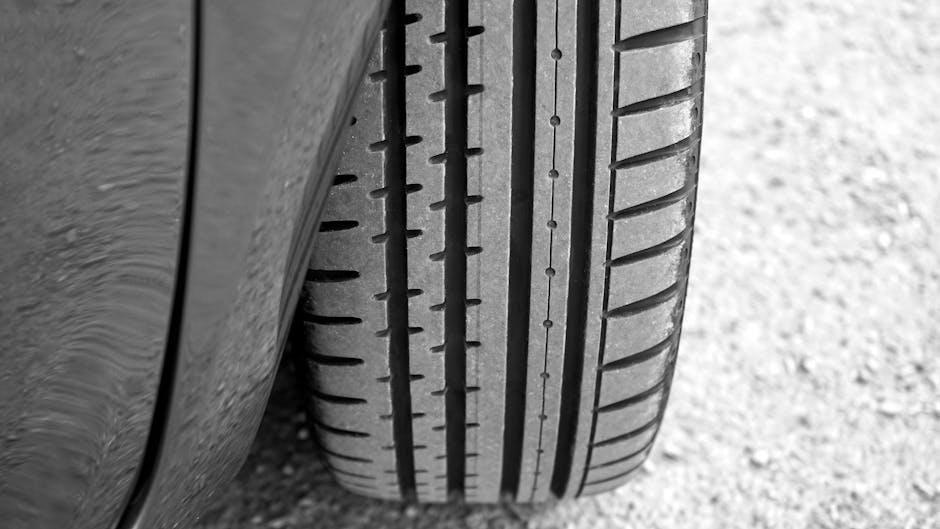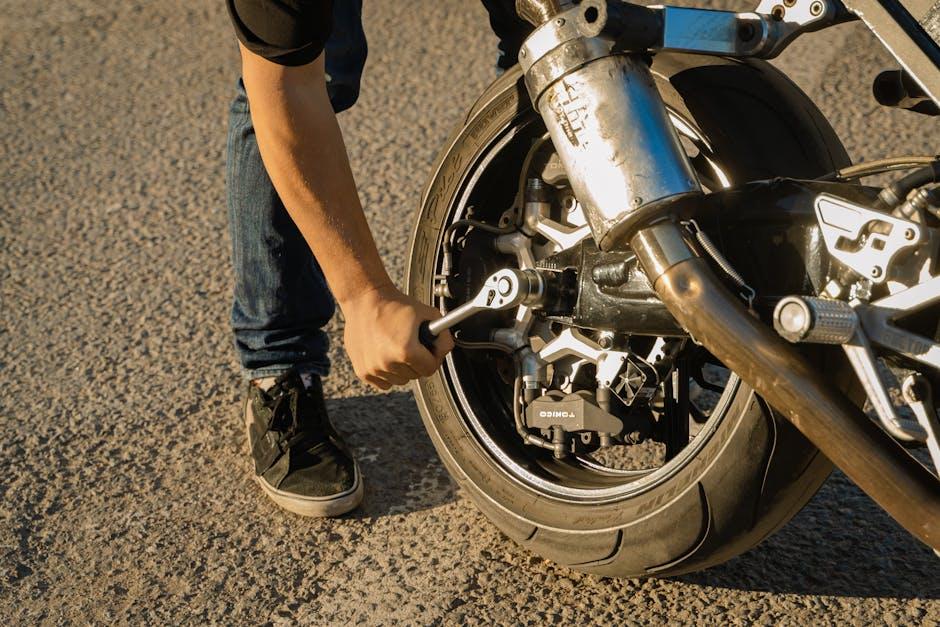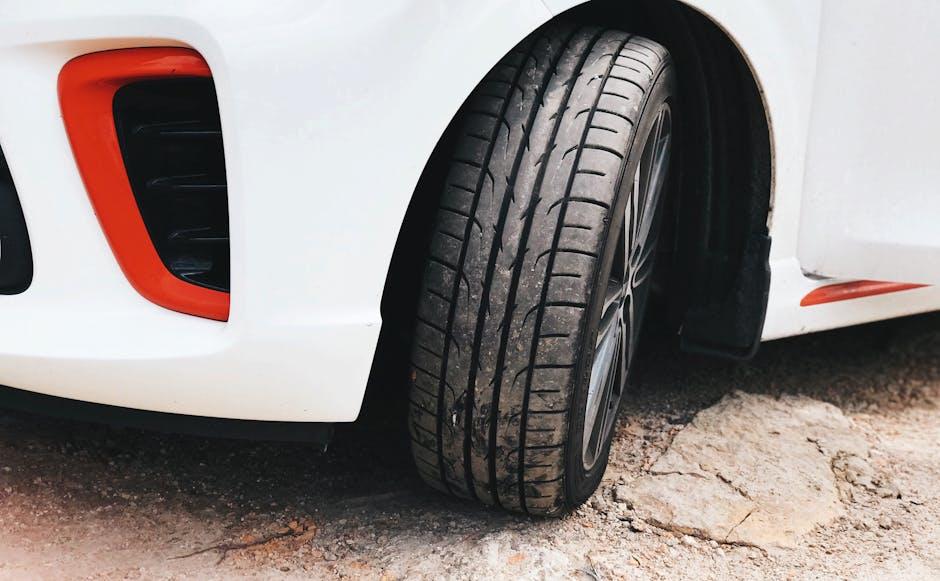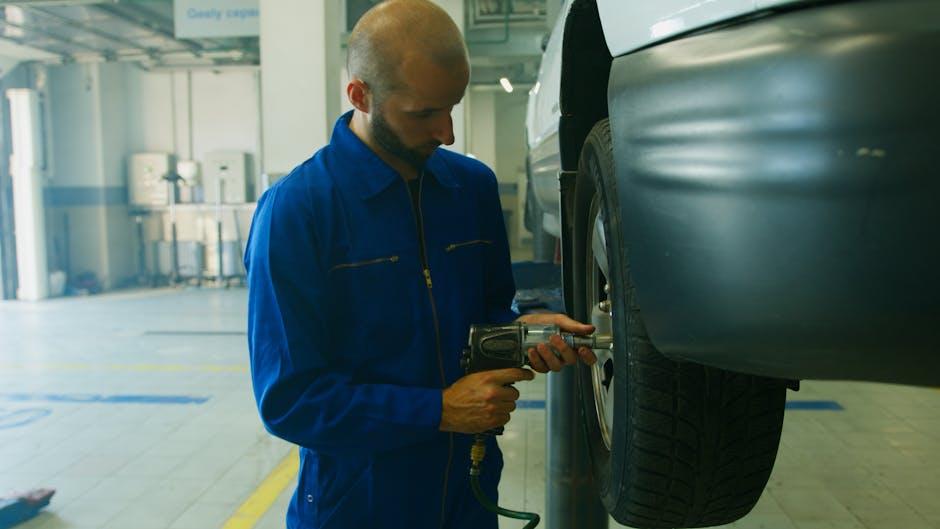Imagine your car as a finely tuned orchestra, where every component plays a crucial role in delivering a smooth, harmonious ride. Among these parts, your wheels are the percussionists—setting the rhythm and pace for every turn and mile. But when they’re out of sync, the whole performance falters, leading to uneven tire wear, shaky handling, and a less comfortable drive. Proper wheel alignment is the key to keeping your vehicle’s journey steady and safe. In this article, we’ll explore how to align car wheels properly, unveiling the techniques and tips that ensure your wheels are perfectly in tune with the road ahead.
Table of Contents
- Understanding the Importance of Proper Wheel Alignment
- Signs Your Car Might Need Wheel Alignment
- Preparing Your Vehicle for Accurate Alignment
- Step-by-Step Guide to Checking Wheel Alignment at Home
- Expert Tips for Adjusting Camber, Caster, and Toe Angles
- Maintaining Optimal Alignment for Longevity and Safety
- Q&A
- Future Outlook

Understanding the Importance of Proper Wheel Alignment
Proper wheel alignment is essential for maintaining your vehicle’s performance and safety. Misaligned wheels can cause uneven tire wear, pulling to one side, and reduced fuel efficiency. Ensuring your wheels are correctly aligned not only enhances your driving experience but also extends the life of your tires and suspension components. A balanced alignment contributes to smoother handling and precise steering response, preventing unnecessary strain on various parts of your car.
Consider the following key benefits of maintaining proper wheel alignment:
- Improved tire longevity: Even wear patterns help tires last longer, saving you money.
- Enhanced safety: Precise alignment reduces the risk of accidents caused by poor handling or steering issues.
- Better fuel economy: Properly aligned wheels create less rolling resistance, optimizing your vehicle’s fuel consumption.
- Smoother driving experience: Alignment prevents pulling and vibrations, making every ride more comfortable.
| Common Signs of Misalignment | Potential Cause |
|---|---|
| Uneven tire wear | Incorrect camber angle |
| Car pulling to one side | Misadjusted toe settings |
| Steering wheel vibration | Unbalanced or misaligned wheels |

Signs Your Car Might Need Wheel Alignment
Noticing your vehicle pulling to one side while driving or a crooked steering wheel when driving straight are classic indicators that your wheels might be misaligned. Another common sign is uneven or rapid tire wear, which can drastically shorten tire life and lead to costly replacements. Pay close attention if you feel vibrations in the steering wheel or if the car feels unstable, especially at higher speeds—these symptoms often hint at alignment issues that should not be ignored.
Keeping an eye out for these subtle signals can save you time and money down the road. Here are some quick ways to detect potential alignment problems:
- Uneven tire tread wear: Check for smooth areas or excessive wear on one side of the tire.
- Steering wheel off-center: The wheel should be nearly straight when driving on a flat, straight road.
- Pulling to one side: A slight drift to the left or right despite holding the wheel steady.
- Excessive vibration: Noticeable shaking in the steering wheel or vehicle body.
| Symptom | Possible Cause | Recommended Action |
|---|---|---|
| Pulling to One Side | Misaligned front wheels | Schedule wheel alignment check |
| Uneven Tire Wear | Incorrect camber or toe settings | Inspect and rotate tires |
| Vibrations | Unbalanced or misaligned tires | Balance wheels and align |

Preparing Your Vehicle for Accurate Alignment
To ensure a precision wheel alignment, start by checking your vehicle’s suspension and tire condition. Worn-out suspension components or uneven tire tread can skew the alignment process, leading to inaccurate results. Before heading to the alignment bay, inflate your tires to the recommended pressure listed in your owner’s manual—underinflated or overinflated tires alter the wheel angle and compromise alignment accuracy. Don’t forget to remove any excess weight from the car; added cargo can shift your vehicle’s stance and throw off the alignment sensors.
Next, position your vehicle on a level surface. This step is crucial as an uneven ground can mislead measuring instruments and create false readings. If possible, measure the ride height at all four corners to confirm the suspension is evenly set. Finally, disconnect cruise control and ensure the steering wheel is centered and locked in place. This setup eliminates any variations in steering angle that might affect the alignment results.
- Check tire condition and pressure
- Inspect suspension for wear or damage
- Remove heavy cargo or accessories
- Position vehicle on a flat, level surface
- Center and lock the steering wheel
| Preparation Step | Why It Matters |
|---|---|
| Tire Pressure | Ensures consistent contact patch for sensors |
| Suspension Check | Avoids false readings from worn parts |
| Steering Wheel Position | Prevents misalignment due to steering offset |
| Level Surface | Provides stable reference angles |

Step-by-Step Guide to Checking Wheel Alignment at Home
Begin by parking your car on a flat surface and ensure your tires are properly inflated. Using a tape measure, check the distance between the front edges of the tires and then the back edges. This rough toe measurement helps you identify if your wheels are pointing inward or outward. For precision, mark a reference line on each tire with chalk or tape. Stand back and observe the tires from different angles to spot uneven wear, which often signals misalignment.
Next, use a spirit level to check the camber by placing it along the wheel’s face vertically; a tilt indicates improper camber. For a more detailed examination, try the following:
- Steering Wheel Centering: Ensure the steering wheel is straight when the tires face forward.
- String Test: Stretch a string from the rear to the front tire along the side of the car to verify parallelism.
- Drive test: On an open road, note if the car pulls left or right without steering input.
| Check | Ideal Position | Indication of Problem |
|---|---|---|
| Toe | Parallel or slight toe-in | Wheels angled inward/outward |
| Camber | Vertical | Wheel tilts inward/outward |
| Steering Wheel | Centered | Off-center when driving straight |

Expert Tips for Adjusting Camber, Caster, and Toe Angles
Mastering the balance of camber, caster, and toe angles is crucial to achieving an optimal wheel alignment that elevates both safety and performance. Camber adjustment influences how the tire contact patch meets the road. A slight negative camber, where the top of the tire leans inward, can enhance cornering grip, but too much can cause uneven tire wear. Meanwhile, caster angle plays a subtle yet powerful role in steering stability and returnability. A positive caster helps the wheels self-center after a turn, offering a smoother driving experience on long highways or twisty roads.
Toe settings dictate the direction your tires point relative to the vehicle’s centerline and dramatically impact tire wear and vehicle responsiveness. Slight toe-in generally improves straight-line stability, whereas toe-out can boost cornering response at the expense of tire longevity. Here’s a handy reference to keep these angles in check during your alignment process:
| Angle Type | Ideal Range | Effect of Misalignment |
|---|---|---|
| Camber | -1° to 0° | Uneven tire wear, poor cornering |
| Caster | 3° to 5° positive | Steering instability, difficult return |
| Toe | 0° to 0.1° toe-in | Excessive tire wear, poor handling |
- Use precision tools: A professional alignment machine can measure these angles with high accuracy, but quality digital angle finders can also work.
- Adjust systematically: Start with camber, then caster, and finally toe to ensure proper synchronization between each adjustment.
- Recheck and test drive: After adjusting, test drive to feel handling improvements and re-inspect angles for consistency.

Maintaining Optimal Alignment for Longevity and Safety
Ensuring your wheels are perfectly aligned not only enhances your vehicle’s performance but also extends the lifespan of critical components. Misalignment can lead to uneven tire wear, causing you to replace your tires more frequently and increasing maintenance costs over time. Beyond the financial impact, improper alignment compromises handling precision, making your driving experience less stable and potentially hazardous, especially during sudden maneuvers or adverse weather conditions.
Regular alignment checks anchor the foundation of vehicle safety and reliability. To maintain optimal alignment, consider the following best practices:
- Periodic inspections: Schedule alignments every 12,000 miles or after hitting potholes or curbs.
- Tire care: Rotate and balance your tires consistently to promote even wear.
- Suspension vigilance: Monitor and repair worn suspension parts that can affect alignment angles.
| Symptom | Possible Cause | Recommended Action |
|---|---|---|
| Uneven Tire Tread | Wheel Misalignment | Alignment Check |
| Car Pulls to One Side | Incorrect Camber or Toe | Adjust Alignment Angles |
| Steering Wheel Off-Center | Faulty Steering Linkage | Inspect and Repair |
Q&A
Q&A: How to Align Car Wheels Properly
Q1: Why is wheel alignment important for my car?
A1: Proper wheel alignment ensures your tires wear evenly, improves fuel efficiency, enhances handling, and keeps your ride smooth and safe. Misaligned wheels can cause uneven tire wear and pull your vehicle to one side, which can be hazardous over time.
Q2: What are the signs that my car’s wheels need aligning?
A2: Look out for your car pulling to one side when driving straight, uneven tire wear, a crooked steering wheel while driving straight, or a vibrating steering wheel. These symptoms suggest your wheels might be out of alignment.
Q3: How often should I get my wheels aligned?
A3: It’s generally recommended to check alignment every 6,000 to 10,000 miles or at least once a year. If you notice any signs of misalignment or after hitting a significant pothole or curb, it’s a good idea to get your alignment checked.
Q4: Can I align the wheels myself, or do I need a professional?
A4: While minor tweaks can sometimes be done at home with the right tools and knowledge, proper wheel alignment requires precision instruments and expertise, so it’s best left to professionals who use specialized alignment machines.
Q5: What does a professional wheel alignment involve?
A5: A technician measures and adjusts the angles of your wheels—camber, caster, and toe—to manufacturer specifications. This is typically done with your car on an alignment rack equipped with sensors and cameras to ensure crisp precision.
Q6: Will wheel alignment fix all tire wear problems?
A6: Not always. Alignment stops uneven wear caused by improper angles, but worn suspension parts, underinflated tires, or poor driving habits also affect tire life. A comprehensive inspection ensures all issues are addressed.
Q7: Is wheel alignment different for front-wheel and rear-wheel-drive vehicles?
A7: The principles are the same, but adjustments vary based on drivetrain and suspension design. Professionals tailor the alignment to your specific vehicle model and configuration for optimal performance.
Q8: How much does a typical wheel alignment cost?
A8: Prices vary by location and vehicle type but generally range from $50 to $100. Investing in proper alignment saves money in the long run by extending tire life and preventing further mechanical issues.
Q9: Can improperly aligned wheels damage other parts of my car?
A9: Yes. Misalignment can strain suspension components, lead to premature tire failure, and increase fuel consumption, potentially resulting in costly repairs if left unchecked.
Q10: What can I do to maintain wheel alignment longer?
A10: Drive cautiously to avoid potholes and curbs, maintain proper tire pressure, and schedule routine inspections. Regular maintenance helps keep your wheels—or rather, your whole driving experience—in perfect harmony.
Future Outlook
In the end, properly aligned wheels do more than just keep your car rolling straight—they steer you toward safer drives, smoother rides, and longer-lasting tires. By understanding the nuances of wheel alignment and taking the time to check and adjust when needed, you’re not just maintaining your vehicle—you’re mastering the subtle art of balance on the road. So next time you hit the road, let your wheels guide you true, aligned and ready for every journey ahead.


2 Comments
9elewe
9elewe